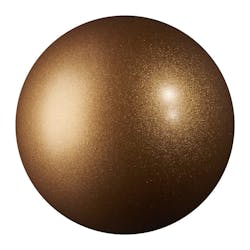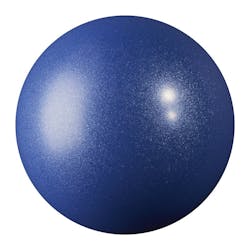Innovations Pave the Way for High-Performing Metallic Coatings
Innovations in the paint industry over the years mean that today’s architects have infinite options for choosing the right colors and finishes for their projects. At Valspar Coil and Extrusion Coating (becoming Sherwin-Williams Coil Coating), chemists are constantly working hard in the laboratory to expand the limits of color. But beyond just color, Valspar has developed durable metallic coating systems that are made to last while providing a vibrant sparkle.
Over the past 50 years, paint manufacturers like Valspar have developed high-performance coatings with a metalescent aesthetic, all while expanding color spaces and enhancing performance. Metalescent pigments comprise of tiny flakes of aluminum, mica, or other effect pigments. The size, shape, and concentration of these flakes influence the shine and finished look of a coating.
Previous to recent innovations, the industry standard was to use flakes of aluminum to achieve sparkling metallic effects in paint. The only problem was that because of aluminum’s composition, a clear coat was required to prevent oxidation. This meant that it was standard for a project to take three coats: a primer, the color coat, and a clear coat on the top.
Now through the use of mica, paint developers can add the perfect sparkle to a coating while bypassing the need for a protective topcoat. Since mica is stable and inert, it doesn’t react with elements or to the environment in the way that aluminum does. Mica doesn’t oxidize and degrade like aluminum flakes do when exposed, meaning that mica-based systems often don’t need a topcoat in order to perform. Reducing systems from three coats to two ultimately saves architects time and money.
Furthermore, innovations in developing these mica-based coatings mean that the product can better withstand exposure to sun, moisture, humidity, heat, and temperature fluctuations, which can corrode coatings and cause vibrant colors to fade. Valspar’s systems are rigorously tested, designed to perform, and can maintain color and gloss integrity for better performing and more consistent products.
While metalescent coatings of the past were traditionally silver, gold, bronze, and champagne, newer pigments allow for metalescent oranges, reds, and other bright colors that will perform just as strongly.
Although many coatings still utilize aluminum for that shimmering effect, mica-based and other metallic and semi-metallic material-based coatings are on the rise. The world of architectural coatings is always changing, and today’s architects have more options than ever to bring their visions to life. Coatings manufacturers are able to match custom colors with this sparkle effect, and can even control the amount of sparkle desired by manipulating the flake size, gloss and other factors.


